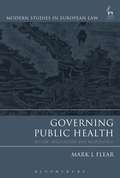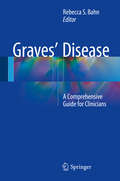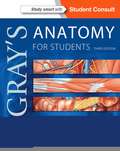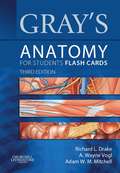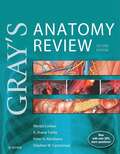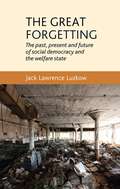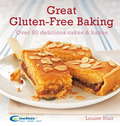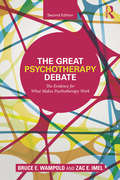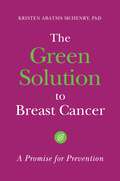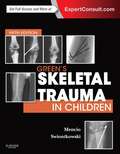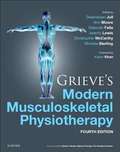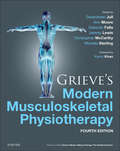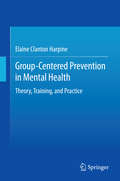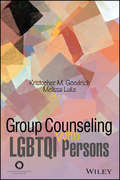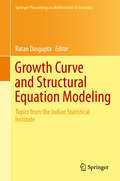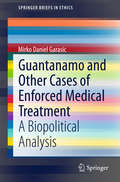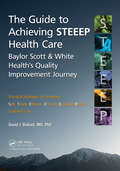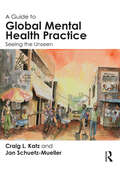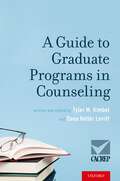- Table View
- List View
Governing Public Health: EU Law, Regulation and Biopolitics (Modern Studies In European Law Ser.)
by Mark FlearThis book contributes towards EU studies and the growing discourse on law and public health. It uses the EU's governance of public health as a lens through which to explore questions of legal competence and its development through policy and concrete techniques, processes and practices, risk and security, human rights and bioethics, accountability and legitimacy, democracy and citizenship, and the nature, essence and 'future trajectory' of the European integration project. These issues are explored first by situating the EU's public health strategy within the overarching architecture of governance and subsequently by examining its operationalisation in relation to the key public health problems of cancer, HIV/AIDS and pandemic planning.The book argues that the centrality and valorisation of scientific and technical knowledge and expertise in the EU's risk-based governance means that citizen participation in decision-making is largely marginalised and underdeveloped – and that this must change if public health and the quality, accountability and legitimacy of EU governance and its regulation are to be improved. Subsequently the book goes on to argue that the legitimating discourses of ethics and human rights, and the developing notion of EU (supra-)stewardship responsibility, can help to highlight the normative dimensions of governance and its interventions in public health. These discourses and dimensions provide openings and possibilities for citizens to power 'technologies of participation' and contribute important supplementary knowledge to decision-making.
Gratitude
by Oliver SacksOliver Sacks died in August 2015 at his home in Greenwich Village, surrounded by his close friends and family. He was 82. He spent his final days doing what he loved: playing the piano, swimming, enjoying smoked salmon - and writing. As Dr Sacks looked back over his long, adventurous life his final thoughts were of gratitude. In a series of remarkable, beautifully written and uplifting meditations, in Gratitude Dr Sacks reflects on and gives thanks for a life well lived, and expresses his thoughts on growing old, facing terminal cancer and reaching the end. I cannot pretend I am without fear. But my predominant feeling is one of gratitude. I have loved and been loved; I have been given much and I have given something in return; I have read and travelled and thought and written. I have had an intercourse with the world, the special intercourse of writers and readers. Above all, I have been a sentient being, a thinking animal, on this beautiful planet, and that in itself has been an enormous privilege and adventure.
Graves' Disease: A Comprehensive Guide for Clinicians
by Rebecca S. BahnThis indispensable volume is designed to facilitate the best possible physician–patient discussion on Graves’ disease by providing the most up-to-date evidence-based information in a clinically useful and patient-centric manner. Comprehensive and covering such topics as Professionalism and the Art of Patient-centric Thyroidology, the Immunopathogenesis of Graves’ Disease, and the Diagnosis and Management of Thyroid Storm, the book addresses all the important refinements in the treatment of Graves’ disease in recent years. These include new indications and contraindications for antithyroid drugs, improved approaches to radioactive iodine therapy, the development of novel surgical techniques, and a better understanding of the combined use of these modalities, among other developments. Also addressed are the advances in the treatment of GO, including the use of disease activity and severity assessments to inform management decisions and the completion of the first randomized controlled therapeutic trials. Developed by a renowned group of internationally respected authorities, Graves’ Disease: A Comprehensive Guide for Clinicians is a significant new reference that will be of great interest to all clinicians who treat this debilitating condition.
Gray's Anatomy for Students E-Book
by Richard Drake A. Wayne Vogl Adam W. MitchellAnatomy texts just don’t get any better than Gray's Anatomy for Students! Now in its 3rd edition, this completely revised medical textbook continues its focus on just the core information you need for your anatomy courses, presenting everything in an easy-to-read, visually appealing format that facilitates study. Consult this title on your favorite e-reader, conduct rapid searches, and adjust font sizes for optimal readability. Obtain reliable, accessible coverage of everything you will learn in your contemporary anatomy classes with expert knowledge from a team of authors who share a wealth of diverse teaching and clinical experience.Easily locate and remember specific structures. More than 1,000 innovative, original illustrations by renowned illustrators Richard Tibbitts and Paul Richardson capture anatomical features with unrivalled clarity.Understand the practical applications of anatomical concepts through unique coverage of surface anatomy, correlative diagnostic images, and clinical case studies.Expedite the review of basic concepts from each chapter with Conceptual Overviews.Stay current and engaged in your anatomy courses with many new "In the Clinic" boxes, which offer access to in-depth clinical discussions related to specific diseases or procedures.Source your review material quickly and easily thanks to a list of additional relevant study aids at the beginning of each chapter.Improve your comprehension of cranial nerves with help from a brand-new visual map summarizing cranial nerve distribution and function. Further enhance your learning by pairing this textbook with its companion review products, Gray's Anatomy for Students Flashcards, 3rd Edition (ISBN: 978-1-4557-1078-2) and Gray’s Atlas of Anatomy 2nd Edition (ISBN 978-1-4557-4802-0)!
Gray's Anatomy for Students Flash Cards E-Book: With Student Consult Online Access (Gray's Anatomy)
by Richard Drake A. Wayne Vogl Adam W. MitchellBased on the phenomenal artwork found in the 3rd edition of Gray's Anatomy for Students, this set of 350 flashcards is the perfect review companion to help you test your anatomical knowledge for course exams or the USMLE Step 1! It's portable, it's concise, it's simply the best way to study anatomy… in a flash!Conveniently access all of the need-to-know anatomy information! Each card presents beautiful 4-color artwork or a radiologic image of a particular structure/area of the body, with numbered leader lines indicating anatomical structures; labels to the structures are listed by number, in addition to relevant functions, clinical correlations, and more.Fully grasp the practical applications of anatomy with "In the Clinic" discussions on most cards, which relate structures to corresponding clinical disorders; a page reference to the companion textbook (Gray's Anatomy for Students, 3rd Edition) facilitates access to further information.Access a clear, visual review of key concepts with wiring diagrams that detail the innervation of nerves to organs and other body parts, as well as muscle cards covering functions and attachments.Study efficiently while being confident in your mastery of the most important anatomical concepts! Flashcards have been thoroughly revised to reflect the updates made to the companion text, Gray's Anatomy for Students, 3rd Edition.Understand the clinical relevance of your anatomical knowledge with brand-new clinical imaging cards added to the set.
Gray's Anatomy Review E-Book: With Student Consult Online Access (Gray's Anatomy)
by Marios Loukas R. Shane Tubbs Peter H. Abrahams Stephen W. CarmichaelNow in its second edition, Gray’s Anatomy Review continues to be an easy-to-use resource that helps you relate anatomy to clinical practice and pass your exams. Designed as a companion to Gray’s Anatomy for Students, this medical textbook is your indispensable resource for both in-course examinations and the USMLE Step 1.Consult this title on your favorite e-reader, conduct rapid searches, and adjust font sizes for optimal readability.Enhance your understanding of the subject and access more detailed information with specific page references to Gray’s Anatomy for Students, plus key answers and explanations to Gray’s Basic Anatomy and Gray’s Atlas of Anatomy.Challenge your grasp of anatomical knowledge and the anatomical basis of disease with more than 500 high-quality, USMLE-style questions, complete with answers and rationales, that mirror the actual USMLE Step 1.Visualize key concepts with updated radiologic images and extensive use of photographs.Understand the latest imaging techniques as seen in clinical practice with the most current knowledge available on today’s anatomical imaging modalities.
The great forgetting: The past, present and future of Social Democracy and the Welfare State (PDF)
by Jack LuzkowToday the US and the UK are at a crossroads. Millions are out of work, millions (in the US) are still deprived of health care, millions have lost their homes, and we are collectively more unequal than we have been since the 1920s. Both countries will experience massive social upheavals if they don’t reduce social inequality, invest massively in education and infrastructure, commit themselves to securing jobs for all who want them, change tax structures that coddle the 1 percent, rein in the anarchy of big banks by reregulating (or nationalising) them, and liberate the captive state from the financial institutions of Wall Street and the City of London. Social inequality is neither inevitable, nor the result of globalisation. It is the outcome of social and economic policies embraced by the 1 percent. This can be reversed by more social democracy, not less, by recovering the state for the 99 percent.
The great forgetting: The past, present and future of Social Democracy and the Welfare State
by Jack LuzkowToday the US and the UK are at a crossroads. Millions are out of work, millions (in the US) are still deprived of health care, millions have lost their homes, and we are collectively more unequal than we have been since the 1920s. Both countries will experience massive social upheavals if they don’t reduce social inequality, invest massively in education and infrastructure, commit themselves to securing jobs for all who want them, change tax structures that coddle the 1 percent, rein in the anarchy of big banks by reregulating (or nationalising) them, and liberate the captive state from the financial institutions of Wall Street and the City of London. Social inequality is neither inevitable, nor the result of globalisation. It is the outcome of social and economic policies embraced by the 1 percent. This can be reversed by more social democracy, not less, by recovering the state for the 99 percent.
Great Gluten-Free Baking: Over 80 delicious cakes and bakes
by Louise BlairFollowing a gluten-free diet needn't mean missing out on delicious cakes and bakes. From melt-in-the-mouth cookies and dainty fairy cakes to rustic homebaked bread and spoil-yourself chocolate cakes, here are over 80 easy recipes that everyone will love. Delectable treats for every occasion are included - from simple Feta & Herb Loaf and Caraway & Sunflower Seed Rolls to truly decadent Coconut & Mango Cake and Passion Cake Squares and snack-time favourites such as Garlic & Caramelized Onion Bhajis and Pizza Scrolls.
The Great Psychotherapy Debate: The Evidence for What Makes Psychotherapy Work
by Bruce E. Wampold Zac E. ImelThe second edition of The Great Psychotherapy Debate has been updated and revised to expand the presentation of the Contextual Model, which is derived from a scientific understanding of how humans heal in a social context and explains findings from a vast array of psychotherapies studies. This model provides a compelling alternative to traditional research on psychotherapy, which tends to focus on identifying the most effective treatment for particular disorders through emphasizing the specific ingredients of treatment. The new edition also includes a history of healing practices, medicine, and psychotherapy, an examination of therapist effects, and a thorough review of the research on common factors such as the alliance, expectations, and empathy.
The Great Psychotherapy Debate: The Evidence for What Makes Psychotherapy Work
by Bruce E. Wampold Zac E. ImelThe second edition of The Great Psychotherapy Debate has been updated and revised to expand the presentation of the Contextual Model, which is derived from a scientific understanding of how humans heal in a social context and explains findings from a vast array of psychotherapies studies. This model provides a compelling alternative to traditional research on psychotherapy, which tends to focus on identifying the most effective treatment for particular disorders through emphasizing the specific ingredients of treatment. The new edition also includes a history of healing practices, medicine, and psychotherapy, an examination of therapist effects, and a thorough review of the research on common factors such as the alliance, expectations, and empathy.
The Green Solution to Breast Cancer: A Promise for Prevention
by Kristen Abatsis Ph.D.This unique, research-based investigation of the U.S. breast cancer movement compares the "pink" and "green" efforts within the movement and documents their use of similar citizen-science alliances, despite the contention over the use of consumer-based activism and pink products.Breast cancer activism is one of the most flourishing research and health advocacy movements in U.S. history. Yet the incidence of breast cancer is continuing to increase. This critical and revealing text investigates breast cancer activism in its two forms—the "pink movement" that focuses on developing awareness of, coping with, and managing breast cancer; and the "green movement" that strives to determine the possible environmental causes of breast cancer—such as pesticides, chemicals, and water and air pollution—and thereby hopes to prevent breast cancer.What caused this new green movement to develop? Will it replace or merge with the pink movement? Does either approach offer more promise for a solution? And how do the two movements differ in their positions or methodology towards a similar goal? With information culled from interviews with more than 50 industry stakeholders, The Green Solution to Breast Cancer: A Promise for Prevention argues that key attributes such as strategy, mission, and branding have led to a greater convergence between the pink and green wings of the movement and presents information that enables readers to consider if either approach might be the shorter route to beating breast cancer.
The Green Solution to Breast Cancer: A Promise for Prevention
by Kristen Abatsis Ph.D.This unique, research-based investigation of the U.S. breast cancer movement compares the "pink" and "green" efforts within the movement and documents their use of similar citizen-science alliances, despite the contention over the use of consumer-based activism and pink products.Breast cancer activism is one of the most flourishing research and health advocacy movements in U.S. history. Yet the incidence of breast cancer is continuing to increase. This critical and revealing text investigates breast cancer activism in its two forms—the "pink movement" that focuses on developing awareness of, coping with, and managing breast cancer; and the "green movement" that strives to determine the possible environmental causes of breast cancer—such as pesticides, chemicals, and water and air pollution—and thereby hopes to prevent breast cancer.What caused this new green movement to develop? Will it replace or merge with the pink movement? Does either approach offer more promise for a solution? And how do the two movements differ in their positions or methodology towards a similar goal? With information culled from interviews with more than 50 industry stakeholders, The Green Solution to Breast Cancer: A Promise for Prevention argues that key attributes such as strategy, mission, and branding have led to a greater convergence between the pink and green wings of the movement and presents information that enables readers to consider if either approach might be the shorter route to beating breast cancer.
Green's Skeletal Trauma in Children E-Book: Expert Consult: Online And Print
by Gregory A Mencio Marc F. SwiontkowskiObtain the best outcomes from the latest techniques with help from a "who's who" of pediatric orthopaedic trauma experts! Considered as the "go-to" reference for orthopaedic trauma surgeons and pediatric orthopaedic trauma surgeons, Green’s Skeletal Trauma in Children presents practical, focused guidance on managing traumatic musculoskeletal injuries in children and adolescents. It emphasizes the unique aspects of children's fractures in terms of epidemiology, mechanisms, management, and the challenges of treating the skeletally immature patient. State-of-the-art coverage includes crucial chapters on skeletal trauma related to child abuse, anesthesia and analgesia, management of children’s fractures, and outcome measures and rehabilitation. Confidently approach every form of pediatric musculoskeletal trauma with complete, absolutely current coverage of relevant anatomy and biomechanics, mechanisms of injury, diagnostic approaches, treatment options and associated complications. Know what to look for and how to proceed with the aid of over 800 high-quality line drawings, diagnostic images, and full-color clinical photos.Glean all essential, up-to-date, need-to-know information about the impact of trauma to the immature and growing skeleton with comprehensive coverage of incidence, mechanisms of injury, classifications, and treatment options and complications for fractures in all major anatomical regions. Benefit from the masterful guidance by the most trusted global authorities in pediatric musculoskeletal trauma care. Make the best use of the newest techniques by effectively applying problem-focused clinical judgment and state-of-the art treatment options found in this reference. Gain new insights on overcoming unique challenges of treating pediatric sports injuries. Rely on a unique emphasis on outcomes assessment of children’s fractures to make the most valid clinical decisions.
Grieve's Modern Musculoskeletal Physiotherapy: Vertebral Column And Peripheral Joints (PDF)
by Gwendolen Jull Ann P. Moore Deborah Falla Jeremy Lewis Christopher McCarthy Michele SterlingSince the third edition of Grieve's Modern Manual Therapy was published in 2005, the original concepts of manipulative therapy have grown to embrace new research-generated knowledge. Expansions in practice have adopted new evidence which include consideration of psychological or social moderators. The original manual therapy or manipulative therapy approaches have transformed into musculoskeletal physiotherapy and this is recognized by the change in title for the new fourth edition - Grieve's Modern Musculoskeletal Physiotherapy. Grieve's Modern Musculoskeletal Physiotherapy continues to bring together the latest state-of-the-art research, from both clinical practice and the related basic sciences, which is most relevant to practitioners. The topics addressed and the contributing authors reflect the best and most clinically relevant contemporary work within the field of musculoskeletal physiotherapy. With this as its foundation and a new six-strong editorial team at its helm, the fourth edition now expands its focus from the vertebral column to the entire musculoskeletal system. For the first time both the spine and extremities are covered, capturing the key advances in science and practices relevant to musculoskeletal physiotherapy. The book is divided into five parts containing multiple sections and chapters. The first part of the book looks at advances in the sciences underpinning musculoskeletal physiotherapy practice. Here there is commentary on topics such as movement, the interaction between pain and motor control as well as neuromuscular adaptations to exercise. Applied anatomical structure is covered in addition to the challenges of lifestyle and ageing. A new section highlights the important area of measurement and presents the scope of current and emerging measurements for investigating central and peripheral aspects relating to pain, function and morphological change. Another section discusses some contemporary research approaches such as quantitative and qualitative methods as well as translational research. Part III contains sections on the principles of and broader aspects of management which are applicable to musculoskeletal disorders of both the spine and periphery. Topics include models for management prescription, communication and pain management and contemporary principles of management for the articular, nervous and sensorimotor systems. In recognition of the patient centred and inclusive nature of contemporary musculoskeletal practice, there is also discussion about how physiotherapists may use cognitive behavioural therapies when treating people with chronic musculoskeletal disorders. The final part of the book focuses on selected contemporary issues in clinical practice for a particular region, condition or the most topical approaches to the diagnosis and management of a region. A critical review of the evidence (or developing evidence) for approaches is given and areas for future work are highlighted. The only textbook which covers the breadth of musculoskeletal physiotherapy practice, bringing together the work and opinions of leading international experts Presents the latest science, research evidence and clinical practices for assessment and management of spinal and extremity disorders Uses contemporary knowledge in diagnostics and future directions to demonstrate how to manage both acute and chronic musculoskeletal pain Considers important aspects underpinning clinical practice across the biopsychosocial domains Now covers the musculoskeletal systems of the upper and lower limbs as well as the spine Title, topics, prominent editors and authors - all reflect the evolution in knowledge, models of diagnosis and contemporary practice Overviews of the latest advances in: the basic sciences relevant to musculoskeletal physiotherapy clinical science and practice imaging and measurement techniques Over 300 illustrations Colour plate section
Grieve's Modern Musculoskeletal Physiotherapy E-Book: Vertebral Column And Peripheral Joints
by Gwendolen Jull Ann Moore Deborah Falla Jeremy Lewis Christopher McCarthy Michele SterlingPresents state-of-the-art manual therapy research from the last 10 yearsMultidisciplinary authorship presents the viewpoints of different professions crucial to the ongoing back pain management debateHighly illustrated and fully referenced
Group-Centered Prevention in Mental Health: Theory, Training, and Practice
by Elaine Clanton HarpineThis book presents the concept of group-centered prevention and provides explanations and exercises for learning the method and teaching it to others. Detailed studies offer evidence for the continuing importance of prevention in mental well-being and distinguishes group-centered prevention from other group interventions by its ability to resolve incipient mental health issues and emotional problems. Case examples with adults, children, couples, and others demonstrate successful uses of group-centered techniques as well as illustrate the problems that arise in group settings. The book's ready-to-apply training exercises give prospective group leaders practice in starting new groups, fostering cohesion, integrating therapeutic factors into sessions, and other core skills. Featured topics include:Group-centered prevention in contrast with other group interventions.Characteristics of effective leaders in group-centered prevention.Benefits of prevention groups as opposed to those gained in counseling and therapy.Key constructs of self-efficacy and intrinsic motivation in group-centered prevention.Stages of development in new groups.Formats for developing training exercises.Group-Centered Prevention in Mental Health is an essential resource for scientist-practitioners, clinicians, and researchers as well as graduate students in such disciplines as school psychology, social work, and public health. Its educational uses span classroom, workshop, and training settings across the health and healing disciplines.
Group Counseling with LGBTQI Persons Across the Life Span
by Kristopher Goodrich Melissa LukeThis unique resource provides strengths-based, group counseling strategies designed to meet the needs of LGBTQI clients in a variety of settings. Drs. Goodrich and Luke capture the developmental concerns of LGBTQI individuals throughout the life cycle as they establish and maintain intimate relationships, create families, encounter career concerns, and navigate other milestones and transitions. Illustrative case examples and interventions throughout the text, as well as warnings and recommendations, make this an ideal resource for practice and group work courses. After a discussion of the history of group work with the LGBTQI community, the planning and process issues that group leaders should consider in their work, and relevant ethical and legal concerns, the authors explore a range of group types and pertinent issues. Individual chapters focus on the following types of counseling: child and adolescent; same-gender adult; intersex and transgender; coming out/disclosure; school, community outpatient, and residential; couples and family; substance abuse; grief and loss; and advocacy. Chapters on group work supervision and the importance of allies round out the book. *Requests for digital versions from the ACA can be found on wiley.com. *To request print copies, please visit the ACA website here. *Reproduction requests for material from books published by ACA should be directed to permissions@counseling.org.
Group Counseling with LGBTQI Persons Across the Life Span
by Kristopher Goodrich Melissa LukeThis unique resource provides strengths-based, group counseling strategies designed to meet the needs of LGBTQI clients in a variety of settings. Drs. Goodrich and Luke capture the developmental concerns of LGBTQI individuals throughout the life cycle as they establish and maintain intimate relationships, create families, encounter career concerns, and navigate other milestones and transitions. Illustrative case examples and interventions throughout the text, as well as warnings and recommendations, make this an ideal resource for practice and group work courses. After a discussion of the history of group work with the LGBTQI community, the planning and process issues that group leaders should consider in their work, and relevant ethical and legal concerns, the authors explore a range of group types and pertinent issues. Individual chapters focus on the following types of counseling: child and adolescent; same-gender adult; intersex and transgender; coming out/disclosure; school, community outpatient, and residential; couples and family; substance abuse; grief and loss; and advocacy. Chapters on group work supervision and the importance of allies round out the book. *Requests for digital versions from the ACA can be found on wiley.com. *To request print copies, please visit the ACA website here. *Reproduction requests for material from books published by ACA should be directed to permissions@counseling.org.
Growth Curve and Structural Equation Modeling: Topics from the Indian Statistical Institute (Springer Proceedings in Mathematics & Statistics #132)
by Ratan DasguptaThis book describes some recent trends in GCM research on different subject areas, both theoretical and applied. This includes tools and possibilities for further work through new techniques and modification of existing ones. A growth curve is an empirical model of the evolution of a quantity over time. Growth curves in longitudinal studies are used in disciplines including biology, statistics, population studies, economics, biological sciences, sociology, nano-biotechnology, and fluid mechanics. The volume includes original studies, theoretical findings and case studies from a wide range of applied work. This volume builds on presentations from a GCM workshop held at the Indian Statistical Institute, Giridih, January 18-19, 2014. This book follows the volume Advances in Growth Curve Models, published by Springer in 2013. The results have meaningful application in health care, prediction of crop yield, child nutrition, poverty measurements, estimation of growth rate, and other research areas.
Guantanamo and Other Cases of Enforced Medical Treatment: A Biopolitical Analysis (SpringerBriefs in Ethics)
by Mirko Daniel GarasicThis volume presents a number of controversial cases of enforced medical treatment from around the globe, providing for the first time a common, biopolitcal framework for all of them. Bringing together all these real cases guarantees that a new, more complete understanding of the topic will be within grasp for readers unacquainted with the aspects involved in these cases. On the one hand, readers interested mainly in the legal and medical dimensions of cases like those considered will benefit from the explanation of the biopolitical framework within which each case develops. On the other hand, those focusing on only one of the situations presented here will find the parallels between the cases an interesting expansion of the complexity of the problem. Despite the book's ambitious goal, for those willing to use it as supplemental material or interested in only one of the cases, the chapters can function as self-standing pieces to be read separately. This volume will be a valuable tool for both academics and professionals. Bioethicists in both the analytic and continental traditions, will find the book interesting for not only the specific concepts and issues considered, but also for its constructive bridging of the two schools of thought. In addition to philosophers, the structure of this work will also appeal to lawyers, doctors, human rights activists, and anyone concerned in the most disparate way with real-life cases of enforced medical treatment.
The Guide to Achieving STEEEP™ Health Care: Baylor Scott & White Health's Quality Improvement Journey
by David J. Ballard MD PhD.Achieving health care that is safe, timely, effective, efficient, equitable, and patient-centered (STEEEP) is not an endpoint, but a journey. This journey requires a commitment to quality improvement (QI) from the highest levels of leadership combined with the interdependent development of several key components of health care delivery: administrat
A Guide to Global Mental Health Practice: Seeing the Unseen
by Craig L. Katz Jan Schuetz-MuellerDrawing on the authors’ experience in developing and implementing global mental health programs in crisis and development settings, A Guide to Global Mental Health Practice: Seeing the Unseen is designed for mental health, public health, and primary care professionals new to this emerging area. The guide is organized topically and divided into four sections that move from organizing and delivering global mental health services to clinical practice, and from various settings and populations likely to be encountered to special issues unique to global work. Case studies based around a central scene are threaded throughout the book to convey what global mental health work actually involves. Mental health professionals of all backgrounds, including social workers, nurses, nurse practitioners, psychologists, and psychiatrists, as well as public health professionals and community level medical professionals and mental health advocates will benefit from this engaging primer. It is the book for anyone committed to addressing mental health issues in a low resource or crisis-hit setting, whether international or domestic.
A Guide to Global Mental Health Practice: Seeing the Unseen
by Craig L. Katz Jan Schuetz-MuellerDrawing on the authors’ experience in developing and implementing global mental health programs in crisis and development settings, A Guide to Global Mental Health Practice: Seeing the Unseen is designed for mental health, public health, and primary care professionals new to this emerging area. The guide is organized topically and divided into four sections that move from organizing and delivering global mental health services to clinical practice, and from various settings and populations likely to be encountered to special issues unique to global work. Case studies based around a central scene are threaded throughout the book to convey what global mental health work actually involves. Mental health professionals of all backgrounds, including social workers, nurses, nurse practitioners, psychologists, and psychiatrists, as well as public health professionals and community level medical professionals and mental health advocates will benefit from this engaging primer. It is the book for anyone committed to addressing mental health issues in a low resource or crisis-hit setting, whether international or domestic.
GUIDE TO GRAD PROGRAMS IN COUNSEL C
by Tyler M. Kimbel and Dana Heller LevittWritten for undergraduate students and other prospective counselors, A Guide to Graduate Programs in Counseling is the first of its kind to create a comprehensive, reliable means of learning about the counseling profession, entry level preparation (i.e., master's degrees in counseling specializations), and what to consider when searching for, applying to, and ultimately selecting a graduate program in counseling that is the "perfect fit." The Guide offers vital information relative to accreditation and its importance in the counseling profession with regards to obtaining licensure, certification, and even employment opportunities after graduating. As a CACREP publication, this book is the official source of information about accredited counseling programs and includes information about what counseling programs seek in candidates, what programs can offer students in terms of professional development and job placement, and guidance on personal and practical considerations for entering the counseling profession. Authored by counseling experts and featuring insights from voices in the field, A Guide to Graduate Programs in Counseling is a must-have resource for anyone interested in becoming a professional counselor.
